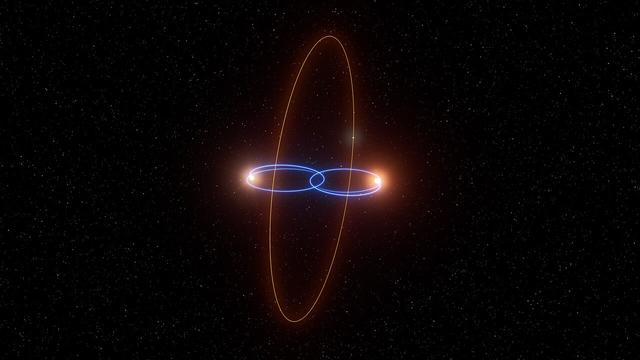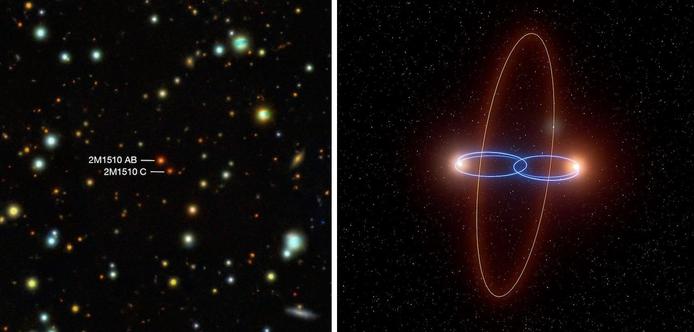Possibly the weirdest planet yet discovered?
Newfound world 2M1510 (AB) b appears to orbit not one but two stars...and they are actually failed stars, known as brown dwarfs...and the planet orbits sideways, in a unique up-and-down polar orbit.
https://www.eso.org/public/news/eso2508/ #space #science #astronomy #nature

"Big surprise": astronomers find planet in perpendicular orbit around pair of stars
Astronomers have found a planet that orbits at an angle of 90 degrees around a rare pair of peculiar stars. This is the first time we have strong evidence for one of these ‘polar planets’ orbiting a stellar pair. The surprise discovery was made using the European Southern Observatory’s Very Large Telescope (VLT).



